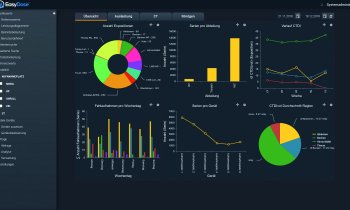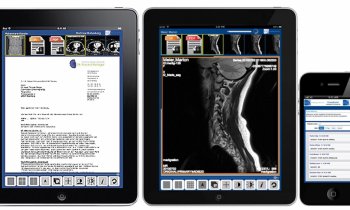We need greater compatibility!
PACS vendors, image modality manufacturers and storage solution providers must cooperate
As medical images are increasingly digitized, their management, compression and retrieval is increasingly challenged. According to new analysis* from Frost & Sullivan, which examined medical image storage solutions markets in the United Kingdom, France, Spain, Germany, Scandinavia, Benelux and Italy, the total European storage requirement in 2007 was 106,044 terabytes (TB).
Whilst F&S analyst Shriram Shanmugham, mentioned the many known benefits of digital images, the researcher also pointed out the downside: certain images are not DICOM compatible and require a service-oriented approach in order to be archived. ‘This is primarily because evolving healthcare standards such as DICOM and HL7 are being updated at a much slower pace than image archiving and image modality technology. ‘Other challenges include ensuring interoperability with hospital-based information systems. Another issue is that diagnostic procedures, such as echo and angiogram, generate a high resolution, large file-size images, and their long retrieval times pose a concern for hospitals.’
‘Some PACS vendors provide their own unique solution to archiving images that are not DICOM compatible, while others think it is wise to work around the evolving healthcare standards so that, in the future, systems interoperability is streamlined,’ Shriram Shanmugham noted, predicting: ‘This trend of providing solutions to images that are not DICOM compatible will be prevalent over the next five to seven years.’
The digitised medical imaging archives market requires complete cooperation among the following three major industry participants: PACS vendors, image modality manufacturers and storage solution providers, F&S emphasised. ‘Some PACS vendors have indicated that it would be convenient for them if image modality manufacturers provided them with test data before an image modality goes on sale. By having the test data beforehand, PACS vendors affirmed that they could easily establish connectivity (interoperability) of their module with the image modality.’
Hospitals cannot afford to experience an image server downtime, the analyst concludes. ‘It is therefore essential that storage solution providers devise innovative technology that obviates the possibility of such server downtime.’
To receive a virtual brochure, e-mail your name, company name, title, telephone number, company e-mail address, company website, city, state and country, to: katja.feick@frost.com
*http://www.medicalimaging.frost.com. Strategic Outlook into Archive Requirements for Image Management in Medical Imaging M30F
01.05.2009











